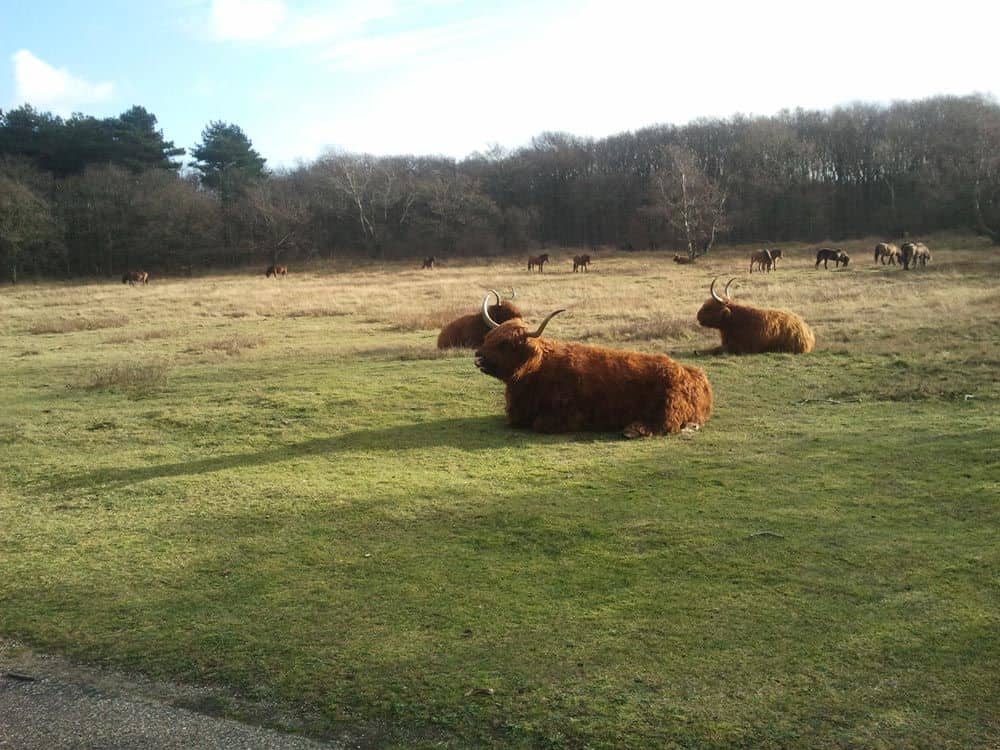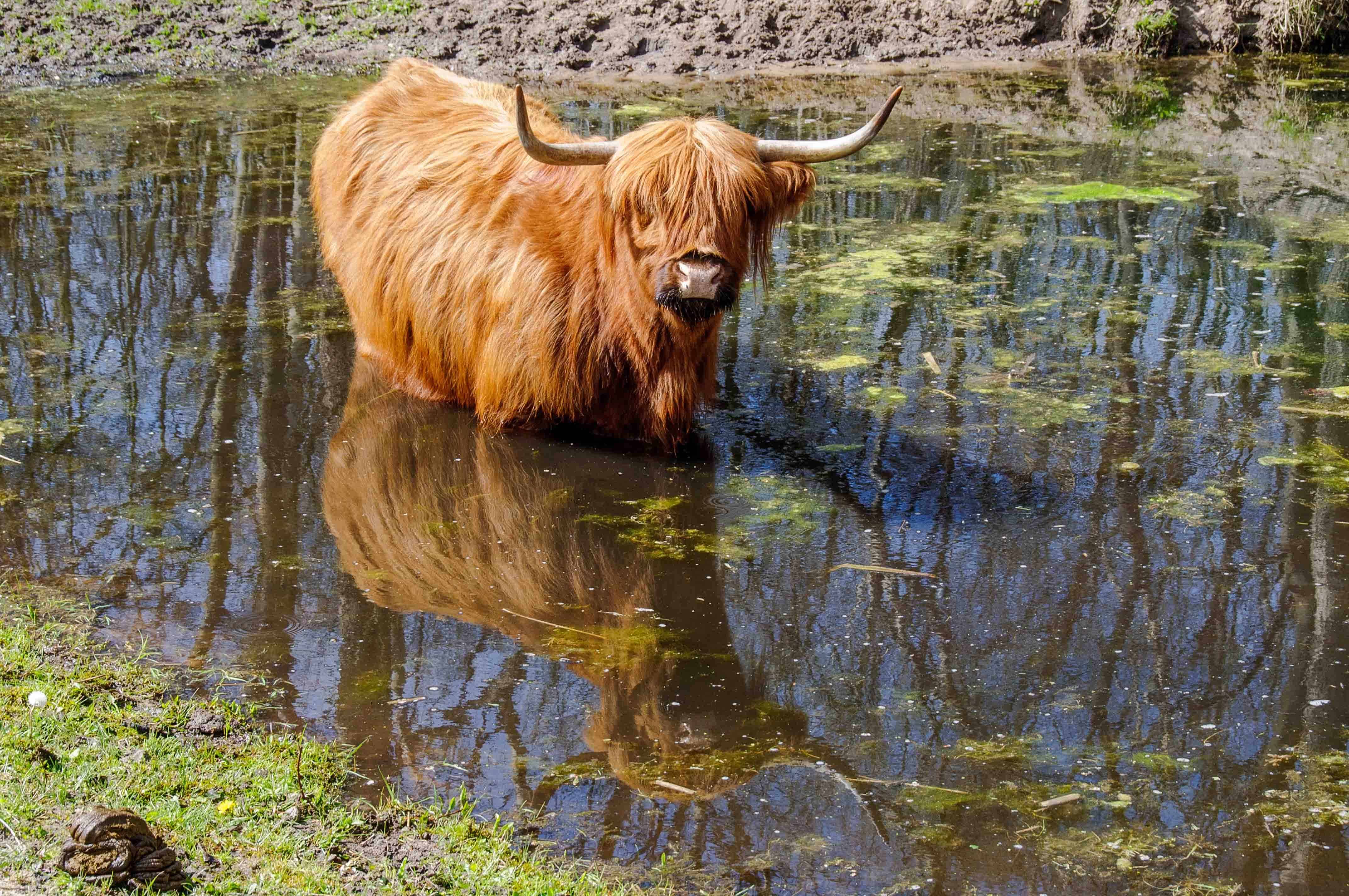In the dune area of PWN
They look very cuddly with their long reddish-brown hair, which they also have hanging down a little boyishly in front of their eyes. But they also remain simply – quite large – wild animals, not meant to be petted at all. Originally, they are even flight animals, but by now the Scottish Highlanders have become so established in PWN’s dune area that these cows care very little about passing hikers. ”They just quietly do their thing, continue to graze imperturbably,” says ranger Evert-Jan Woudsma. ”Although I can imagine that with the numbers of walkers passing by with the Wandel4daagse, they might retreat deeper into the dune area.”
Scottish Highlander
A Scottish Highlander is by definition a quiet animal, more likely to flee than attack. But even such a gentle animal has its limits. ,,What you should definitely not do is approach the cows to take a picture,” says Woudsma. ,You get tired of walkers all day long. And then it will still run away in 99.9 percent, but it is still a big beast with very large horns. So you always have to watch out.”
It won’t happen so quickly during a major hiking event, but a Highlander sometimes doesn’t notice when a hiker approaches. ,,Then he may be startled when you are suddenly in front of him. So I advise people to greet a cow. Just shout: hello Highlander!”
In addition to Scottish Highlanders, PWN also deploys Exmoor ponies and Konik horses in this area to graze the dunes. The same rule applies to them: do not approach. These are even more flight animals than Highlanders, they are much more shy.”
Deadly
The rule for all grazers is: don’t feed. ”We always say: an apple kills,” Woudsma says. ,,Not the apple in itself, but the consequence of it. Such an animal starts associating people with food and then they go after people. We cannot maintain animals that behave like that in the dunes. We take them out and then there is only one future for them: slaughter.”
Apart from the large grazers released by PWN, there are of course a lot of animals that occur naturally in the dune area. Whether you will see them is another matter. The fox, for example, prefers to keep a low profile when hikers pass by. The same is true of the pine marten. The observant hiker might spot a squirrel or hedgehog, currently gathering food for their young.
In any case, nature lovers are well catered for in the dunes, where everything is brilliantly green at the moment. Something very beautiful is blooming in the verges at the moment: snakeweed. “It has beautiful blue flowers, where countless insects feast on the nectar,” says Woudsma. The pistil has a split end: like a snake’s tongue. The same applies to these plants as to animals: don’t touch them, just enjoy them.”
Nettle
Arriving at some plants is not so wise either. The most well-known, which is currently rampant in the dunes, is probably the stinging nettle. However, should an unwary hiker pick up such a nasty welt, there are remedies. The leaves of the deadnettle, which often blooms near nettles, work wonders against the burn. And dog’s thistle works very well for me,” says Woudsma. ”Everyone has a different theory about a plant that helps with nettles. There are those who believe you should have plantain. With me, that doesn’t work. But oh well, if you believe in it strongly enough, it goes away by itself.”

Exmoor ponies in the dunes of Egmond
Michiel Mooij is an organic dairy farmer, who runs 31 Exmoor ponies in the dune area between Egmond and Castricum, in nature reserve “Noordhollands Duinreservaat.
Ponies (geldings and mares) graze the approximately 1,100-acre area along with Scottish Highlanders.
Because our Exmoor ponies have not been domesticated much, if at all, they have retained their natural characteristics. This makes Exmoor ponies very suitable for year-round grazing of natural areas.
Because of their natural shyness toward humans, Exmoor ponies do not approach the public on their own accord to be fed.

